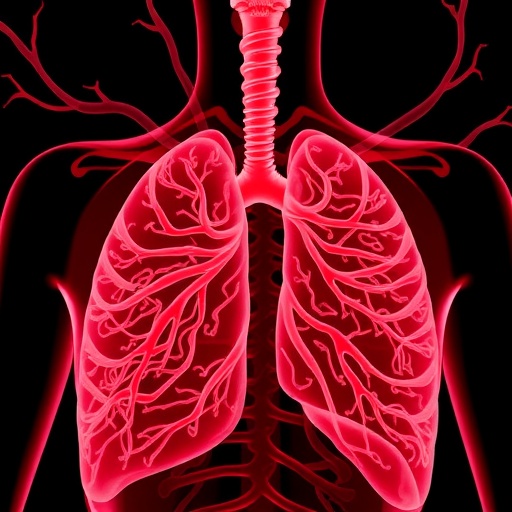Philadelphia, May 9, 2018 – A new study in Biological Psychiatry: Cognitive Neuroscience and Neuroimaging reports that people with obsessive-compulsive disorder (OCD) feel more distress when viewing images to provoke OCD-related emotions than their unaffected siblings. Although the unaffected siblings showed lower levels of distress, they had higher levels of brain activity in regions important for attention. The findings suggest that the family members may draw on additional brain resources to compensate for potential abnormalities in emotion regulation.
The study reveals an important difference in how the brain processes and regulates emotion between patients with OCD and their unaffected siblings. "This indicates that the brain function of people with OCD is a product of currently having the disorder, and unrelated to genetic or familial risk," said first author Anders Thorsen, MSc, of Haukeland University Hospital, Norway. The distinction is crucial for efforts to identify people at risk for OCD–a disorder that has strong genetic influences. Although difficulty with emotion regulation is thought to contribute to OCD, the findings indicate that brain activity patterns associated with abnormal emotion regulation cannot be used to identify people who are at genetic risk of OCD.
In the study, Mr. Thorsen and colleagues compared 43 patients with OCD, 19 unaffected siblings, and 38 unrelated healthy controls. During measurements of brain activity, participants viewed pictures to evoke fear or OCD-related symptoms, such as compulsive washing or checking the surrounding environment for potential harm, and reported their levels of distress. The participants were instructed to either simply view the picture or try to tune down their negative emotions in response to the picture.
People with OCD and their unaffected siblings had similar brain responses and feelings of distress in response to fearful images as the healthy controls. However, when viewing OCD-related images, patients with OCD had increased distress and higher levels of activity in emotion-related brain regions than healthy controls. Brain activity in siblings fell between the levels in patients and controls, not distinguishable from either. "At the same time, siblings are also not like healthy controls," said Mr. Thorsen, referring to the higher levels of brain activity in attention-related brain regions when trying to regulate the negative emotion response.
"Interestingly, relatives show brain responses in areas that seem to be working harder to help them 'normalize' their responses to these types of OCD-related stimuli," said Cameron Carter, MD, Editor of Biological Psychiatry: Cognitive Neuroscience and Neuroimaging. The authors suggest that the harder working brain regions in siblings may represent compensation to help redirect their focus of attention to protect themselves from developing OCD.
"Future studies should try to further investigate this idea by following families with OCD through development," said Mr. Thorsen.
###
Notes for editors
The article is "Emotion regulation in obsessive-compulsive disorder, unaffected siblings and unrelated healthy controls," by Anders L. Thorsen, Stella J. de Wit, Froukje E. de Vries, Danielle C. Cath, Dick J. Veltman, Ysbrand D. van der Werf, David Mataix-Cols, Bjarne Hansen, Gerd Kvale, and Odile A. van den Heuvel (https://doi.org/10.1016/j.bpsc.2018.03.007). It appears in Biological Psychiatry: Cognitive Neuroscience and Neuroimaging, published by Elsevier.
Copies of this paper are available to credentialed journalists upon request; please contact Rhiannon Bugno at [email protected] or +1 214 648 0880. Journalists wishing to interview the authors may contact Anders Thorsen at [email protected].
The authors' affiliations and disclosures of financial and conflicts of interests are available in the article.
Cameron S. Carter, MD, is Professor of Psychiatry and Psychology and Director of the Center for Neuroscience at the University of California, Davis. His disclosures of financial and conflicts of interests are available here.
About Biological Psychiatry: Cognitive Neuroscience and Neuroimaging
Biological Psychiatry: Cognitive Neuroscience and Neuroimaging is an official journal of the Society of Biological Psychiatry, whose purpose is to promote excellence in scientific research and education in fields that investigate the nature, causes, mechanisms and treatments of disorders of thought, emotion, or behavior. In accord with this mission, this peer-reviewed, rapid-publication, international journal focuses on studies using the tools and constructs of cognitive neuroscience, including the full range of non-invasive neuroimaging and human extra- and intracranial physiological recording methodologies. It publishes both basic and clinical studies, including those that incorporate genetic data, pharmacological challenges, and computational modeling approaches. http://www.sobp.org/bpcnni
About Elsevier Elsevier is a global information analytics business that helps institutions and professionals advance healthcare, open science and improve performance for the benefit of humanity. Elsevier provides digital solutions and tools in the areas of strategic research management, R&D performance, clinical decision support and professional education, including ScienceDirect, Scopus, SciVal, ClinicalKey and Sherpath. Elsevier publishes over 2,500 digitized journals, including The Lancet and Cell, more than 38,000 e-book titles and many iconic reference works, including Gray's Anatomy. Elsevier is part of RELX Group, a global provider of information and analytics for professionals and business customers across industries. http://www.elsevier.com
Media contact
Rhiannon Bugno
Editorial Office, Biological Psychiatry: Cognitive Neuroscience and Neuroimaging
+1 214 648 0880
[email protected].
Media Contact
Rhiannon Bugno
[email protected]
214-648-0880
@elseviernews
http://www.elsevier.com
https://www.elsevier.com/about/press-releases/research-and-journals/people-with-ocd-process-emotions-differently-than-their-unaffected-siblings
Related Journal Article
http://dx.doi.org/10.1016/j.bpsc.2018.03.007




